Themes
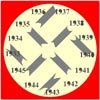
1933
The Fate of the Jews under the Rule of the Swastika (1933-1945)
The local and regional events in the years of the Nazi dictatorship are integrated in the development in the German empire by using texts, documents, drawings, pictures, photos, video clips and animations. The events of the period 1933-1945 are presented in chronological order. Special attention is devoted to the year 1933 with its Nazi seizure of power and, in particular, to the events in November 1938 since it was in our area where the infamous November pogroms (“Crystal Night”) did start nationwide. As early as the 7th November, i.e. on the very day of the assassination attempt at Ernst vom Rath in the German Embacy in Paris there were most terrible anti-Jewish attacks, very shortly after Kassel, in Bebra, Rotenburg and Baumbach in the course of which synagogues were desecrated and devastated, Jewish shops and private homes raided and destroyed. This chapter was awarded the prestigious Victor-Klemperer-Prize in 2001.

1919
The Role of anti-Semitism in the Elections of the Weimar Republic (1919-1939)
First of ll it was the Social Democratic Party (SPD), the main representative of the “Weimar system” which was denounced as being “contaminated by Jewish influence” figuring as “Marxist Jewish Protection Force” or, as “Guardian Angels of Jewish Capitalism”. For the National Socialists the Jews were the embodiment of everything evil.
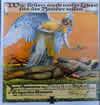
1914
Patriotic Enthusiasm
When World War I broke out in 1914 the Jews rushed to the frontier. Carrying arms they wanted to prove their patriotism. By their unconditional commitment they hoped to be able to refute the unfounded reservations they were confronted with and demonstrate the justification of their demands on a fully equal status. The documentation of the soldiers from the Jewish congregations in our region is a convincing evidence of the groundlessness of the libelling of the Jews as cowards and war profiteers. There also are examples of the acknowledgement of the Jewish frontline soldiers in the municipalities with Jewish citizens.
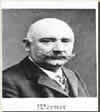
1893
Anti-Semitic agitation and electoral behaviour in the German Empire
In 1893 Ludwig Werner as a representative of the “Antisemitische Volkspartei” (Anti-Semitic People’s Party) won the elections for the “Reichstag” (German Parliament in Berlin) in the Hersfeld-Huenfeld-Rotenburg constituency which he kept until the end of the German Empire in 1918. The political programmes of the anti-Semites and the anti-Semitic electioneering campaigns as well as the reactions of the electors and the different social and denominational sections of the electorate are described and analyzed in this chapter. The electoral behaviour in the individual wards and municipalities of the former Hersfeld county is illustrated by means of cartogrammes and diagrams.

1848
Rotenburg as the place and scene of anti-Jewish riots
In Rotenburg on the Fulda the year 1848 which is generally known as the year of revolutionary events in the fight for liberty was anything but the much conjured-up signal of that kind. Here, there was no protest against the traditional authorities but rather against the local Jewish minority which the public anger was directed at. The anti-Jewish excesses which lasted for more than three months could only be stopped by heavy military invention. The violent 1848 events in Rotenburg are presented by descriptive texts, documents, diagrams, illustrations, drawings, pictures, photos, video clips and animations. The original CD-ROM version on which the Html-version is based was awarded 2nd prize in the prestigious nationwide history competition of the German Federal President organized by the Koerber-Stiftung (Koerber Foundation).

1819
Hep-hep riots and anti-Jewish activities in the 19th and 20th centuries
In 1819, for the first time since the Middle Ages Jewish citizens were simultaneously exposed, at many places in Germany, to persecution and heavy attacks which were accompanied by the derisive and
inflammatory cry “hep, hep” as password. On October 10, 1819 there was a “proclamation” at the Rotenburg town hall addressed to the Jews by which they were given a reprieve for leaving the town. On secretly spread leaflets was written, “On the 18th of October hep-hep will be given. The scene will be on all streets.” In this chapter further anti-Jewish activities in the following years in the Rotenburg area will be presented, up to the claim by the pastor of the Rotenburg-Neustadt Protestant Congregation in 1931 to the Jewish citizens for paying the “Silver Spoon” tribute, a demand which had outlived itself by the emancipation of the Jews in Germany in the 19th century. The violent 1848 anti-Jewish riots in Rotenburg
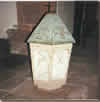
1801
Baptism of Jews
In the late 18th and the early 19th century there were some occasional “free” conversions, e.g. of Isaac Kappel who was living in the Rotenburg Brotgasse, and of Ruben Salomon from Stadtlengsfeld in Thuringia. Through baptism in Rotenburg Jakobikirche (Church of St. Jakob) the latter became Christian Gottlieb whose (blind) grandson August Gottlieb, two generations later, set up the Jutespinnerei (Burlap Spinning Mill) in Bad Hersfeld.
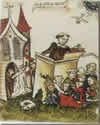
1648
Compulsory Semons
Archival basis for this topic is a file in the Marburg State Archive entitled “Rotenburger Judenpredigten” (Rotenburg Jew Sermons). In the middle of the 17th century there were systematic attempts at having the Jews in the Rotenburg area convert to Christianity. However, these attempts were given up in 1650 on account of their pointlessness. Thanks to their firm faith the local Jews proved, to a great extent, to be immune to Christian conversion. The 17 conversion sermons which were held did not indicate any measurable effect.

1350
Persecution of Jews in ancient years
In the middle of the 14th century, when in many places the Jews were accused of having poisoned the wells and were made responsible for the outbreak of the pestilence this meant forceful death and expulsion also for the Jews who were then living in the Hersfeld and Rotenburg region. This is proved by written evidence. The persecution and killing of Rotenburg Jews during the period of pestilence in the midst of the 14th century is documented in a supplement to the Nurnberg Martyrs book. Sara of Rotenburg and her son who, in 1357, were admitted to live in Erfurt, apparently belonged to the survivors. Also part of this chapter is the accusation of ritual murder and the desecration of consecrated wafers for the Christian holy communion which the Jews were also blamed for.


1330
Early settlement
There had been Jewish life in the Hersfeld-Rotenburg area ever since the 13th century. A record of 1330 documents a synagogue (“Judenschule”) in Breitenstrasse, Hersfeld. From ca. 1500 there were no Jews in Hersfeld for over three centuries. In the town and county of Rotenburg, however, there has been almost continuous life from this time. A so called Schutzbrief (Letter of Protection) of 1414 for the settlement of the Frankfurt Jew Meyer and his wife Sara is the oldest record of that type of the Hesse territories. In 1622 there is evidence of six Jewish families in the Rotenburg district. In the ducal region “Fuldastrom” (Fulda River) of Hesse-Kassel Rotenburg became the centre of Jewish settlement for three centuries.
Anhang

1998
Supplement
Jewish Week in Rotenburg on the Fulda
This internet presence documents, quotes and assesses seven days of a Jewish Week in November 1998 in Rotenburg on the Fulda as part of the official programme of the town’s 50th anniversary. On the following pages the visitor will find information, photos of the events and comments by the visitors.

